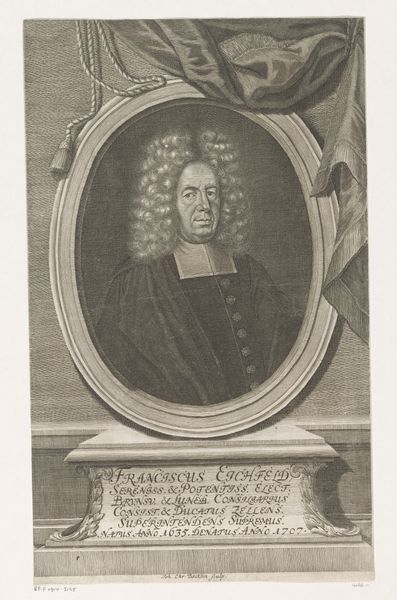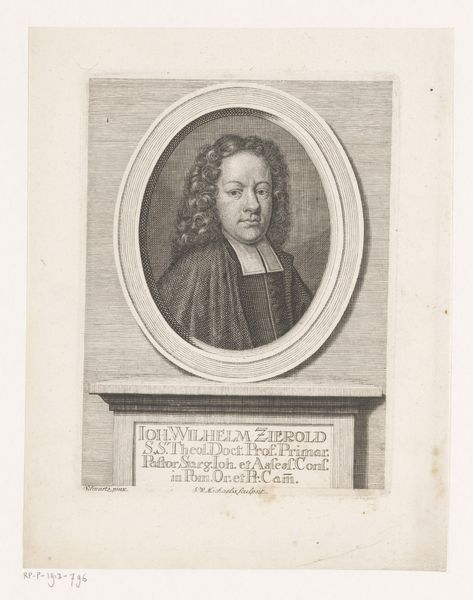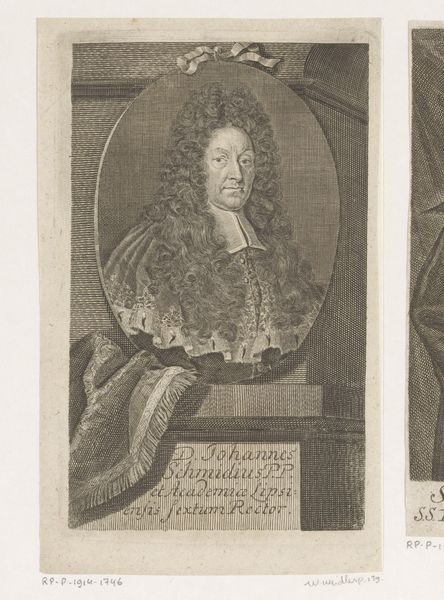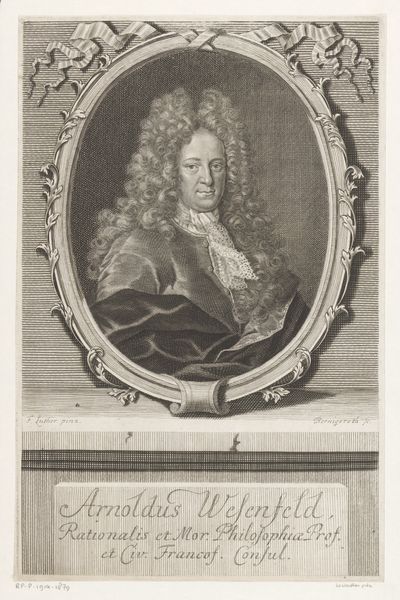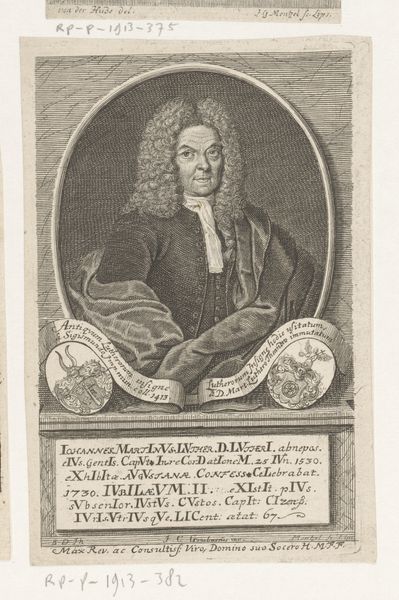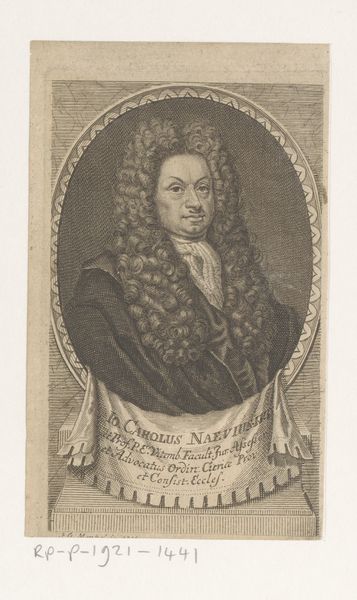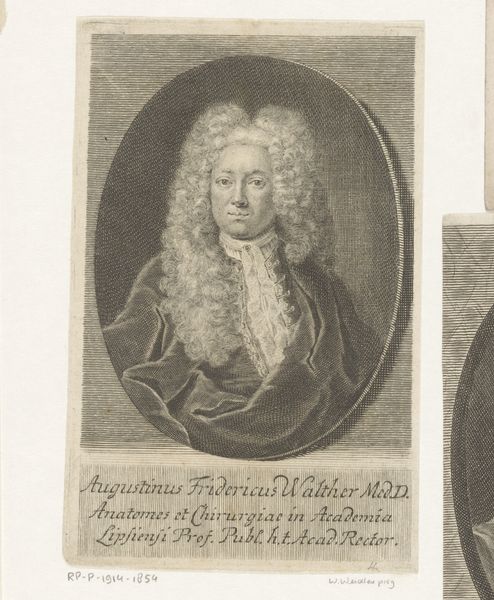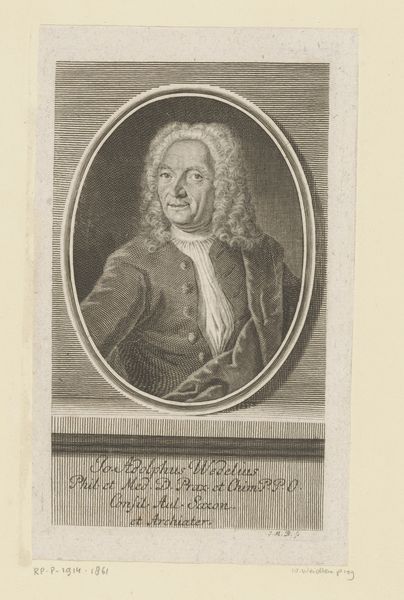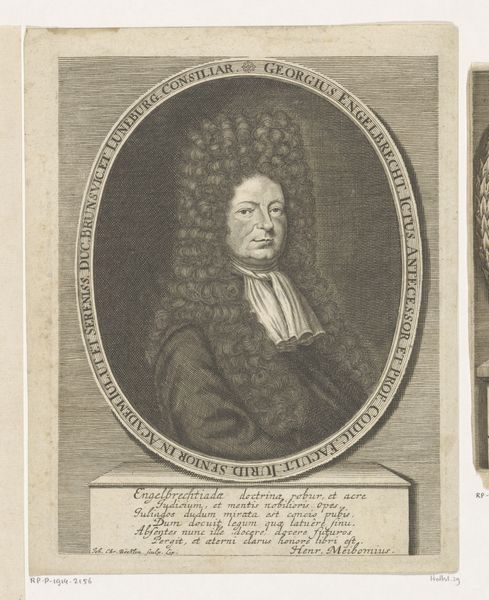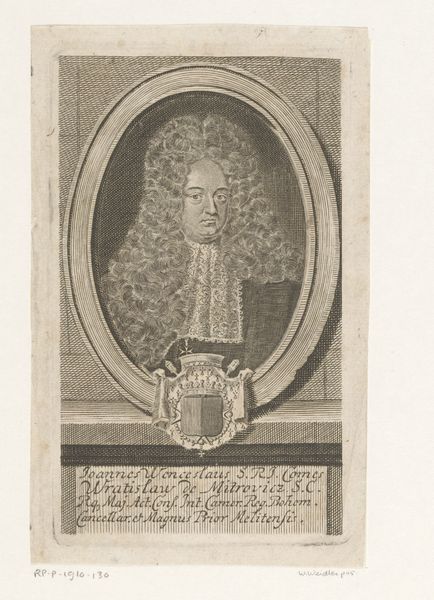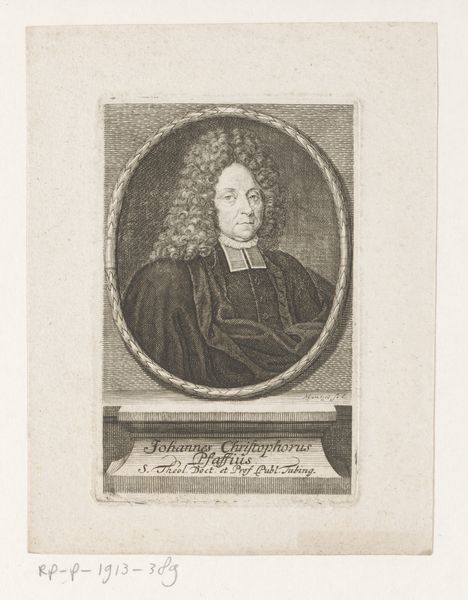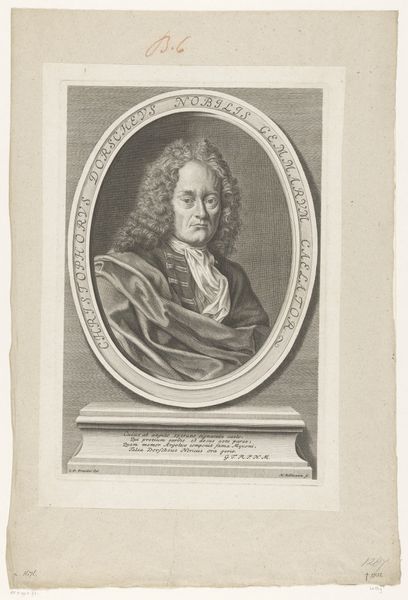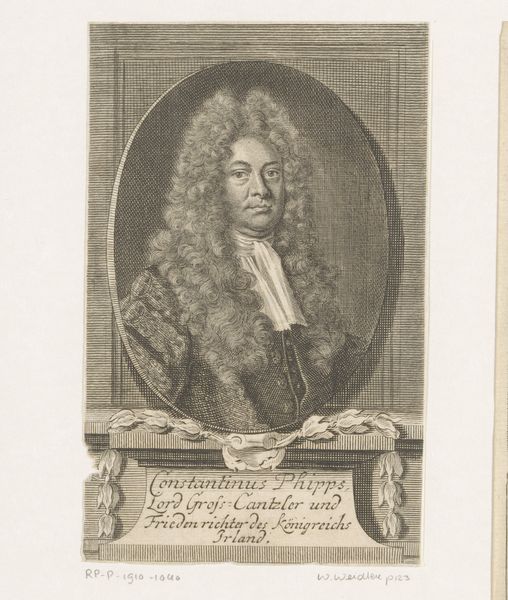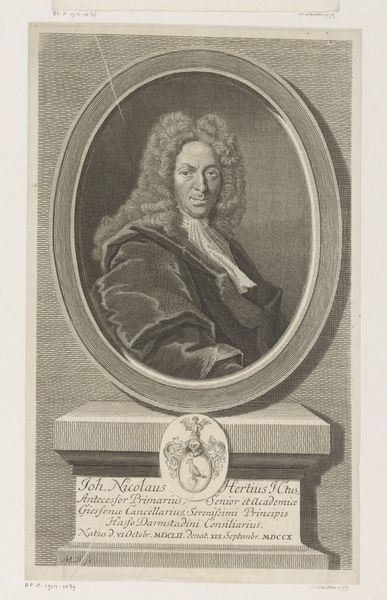
engraving
#
portrait
#
baroque
#
old engraving style
#
line
#
history-painting
#
engraving
Dimensions: height 159 mm, width 97 mm
Copyright: Rijks Museum: Open Domain
Curator: Let’s discuss this striking engraving currently residing here at the Rijksmuseum: Martin Bernigeroth's portrait of Jean-Jacques Manget, dating back to the late 17th or early 18th century. Editor: My first impression is severity. There’s a stoicism radiating from his gaze that contrasts oddly with the baroque extravagance of his wig. It feels like a performance of power, tightly controlled. Curator: Indeed. Bernigeroth's expertise in line engraving really shines. Notice how the density and direction of the lines create volume, especially in rendering the folds of the subject’s attire and the elaborate curls of his wig. This showcases a mastery of visual rhetoric typical of formal portraiture during this period. Editor: It does, but who was Manget? The inscription gives us clues. He was a physician and someone of importance ("Archiater") in the Prussian court. Considering that Bernigeroth was working during a time of scientific revolution, this image is more than just an aesthetic object, it is a piece of a bigger conversation about status, medicine, and knowledge dissemination. Curator: A fair point. It underscores how portraits in the baroque style are complex objects, both formally accomplished and laden with socio-political implications. The oval frame within the rectangular format is interesting, creating depth and perspective within the composition. The frame is almost as austere as Manget looks, which emphasizes his personal character over wealth. Editor: But doesn’t the wig betray that simplicity? Those massive wigs weren't exactly cheap or easy to maintain. They were a blatant signifier of class, worn predominantly by privileged men. It raises questions about the intended audience. Was this intended as a tribute, or perhaps part of a collection meant to assert the power and prestige associated with science? Curator: One could definitely see the engraving within that historical frame. Yet the brilliance is in Bernigeroth's subtle manipulation of lines and forms—elevating a conventional portrait to an enduring work of art. Editor: Perhaps both interpretations hold some validity. I am thinking that by questioning how societal expectations molded Manget’s image and perceived power, we are engaging with more than just his likeness but with history itself. Curator: A provocative conclusion! It allows us to perceive an art object’s influence beyond its purely aesthetic qualities. Editor: Exactly. Context shapes our seeing, after all.
Comments
No comments
Be the first to comment and join the conversation on the ultimate creative platform.
